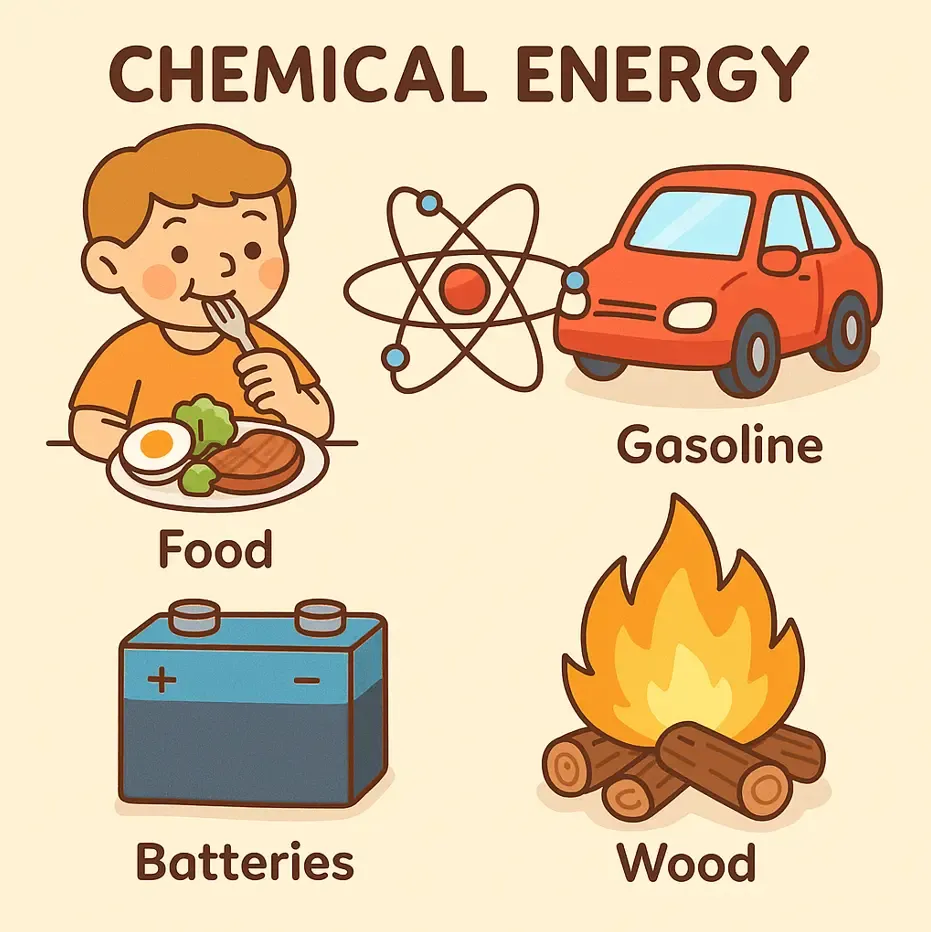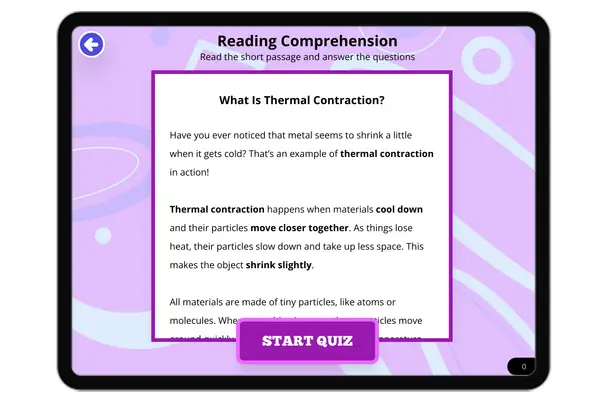Chemical Energy — Reading Comprehension
Grades
- 5
- 6
- 7
- 8
Standards
- MS-PS3-4
- 4-PS3-3
- 4-PS3-2
PRINT+DIGITAL RESOURCE
This learning resource is available in interactive and printable formats. The interactive worksheet can be played online and assigned to students. The Printable PDF version can be downloaded and printed for completion by hand.
About This Reader
This informational science passage on chemical energy is designed for middle school students and aligns with the NGSS standard MS-PS3-4. It explains how chemical energy is stored in bonds and released during chemical reactions, using age-appropriate language and examples like food, batteries, and burning wood. With a focus on energy transformations and practical applications, the passage promotes reading comprehension and scientific literacy. Students are introduced to key concepts like energy release, storage, and the role of chemical reactions in both natural and man-made systems. The passage includes a fun fact to spark curiosity and is followed by eight multiple-choice questions that target factual recall, critical thinking, inference, and application of knowledge. Ideal for reinforcing core science standards and supporting cross-curricular reading skills.
Perfect For:
👩🏫 Teachers
- • Reading comprehension practice
- • Auto-graded assessments
- • Literacy skill development
👨👩👧👦 Parents
- • Reading practice at home
- • Comprehension improvement
- • Educational reading time
🏠 Homeschoolers
- • Reading curriculum support
- • Independent reading practice
- • Progress monitoring
Reading Features:
📖
Reading Passage
Engaging fiction or nonfiction text
❓
Comprehension Quiz
Auto-graded questions
📊
Instant Feedback
Immediate results and scoring
📄
Printable Version
Download for offline reading













